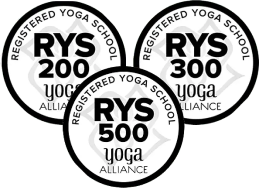
Vajrasana, commonly called Thunderbolt Pose or Diamond Pose, is one of the easy and powerful yoga asanas that provide an array of health benefits, especially for digestion. While most of the other yoga poses are recommended to be practiced on an empty stomach, Vajrasana presents just the opposite case. This pose can be practiced any time after meals since it helps better digestion, reduces bloating, and develops general gut health. In this article, we will discuss the steps, benefits, and precautions in the practice of Vajrasana.
What is Vajrasana Yoga Pose?
Vajrasana is a seated yoga pose in which you sit on your heels, back straight. In Sanskrit, the term “Vajra” means thunderbolt or diamond, which represents the firmness and strength that this position may provide for your body and mind. It is a meditative posture commonly used for breathing exercises and mindfulness meditation. Vajrasana calms the mind, allowing you to focus on your breath and inner thoughts.
Benefits of Vajrasana for Digestion
Vajrasana is especially useful for improving digestion and reducing digestive problems. This is how it works.
- Stimulates Digestive Organs: Sitting in Vajrasana causes light pressure in the stomach, liver, and intestines. Gentle pressure stimulates digestive organs and their juice secretions to enhance digestion.
- Relieves Gas and Bloating: In case you are prone to gas or bloating after consuming food, this asana will make a lot of sense for you. When you sit in this asana, the digestion process improves; subsequently, reducing the chances of gas buildup and bloating.
- Prevents Acid Reflux: The passage of the food in the stomach is proper while performing this yoga asana, thus relieving acid reflux and heartburn.
- Facilitates Proper Intake of Nutrients: Regular practice of Vajrasana enhances blood supply to the digestive organs, which means proper nutrient absorption along with overall digestive health.
- Helps in Constipation: It helps relieve constipation because it helps in peristalsis (the movement of the intestines) and regularizing periodic bowel movements.
Other Health Benefits of Vajrasana
Besides helping digestion, Vajrasana has lots of other health benefits :
Strengthens Pelvic Muscles: This provides a stretching effect and tones and strengthens the pelvic muscles. It is helpful in urinary problems as well as in pregnancy.
Improves Posture: The regular practice of this asana helps in retaining the posture and keeping the spine erect, helping to relieve backache.
Enhances Mindfulness and Concentration: As a meditative pose, Vajrasana helps in calming the mind, reducing stress, and improving focus and concentration.
Relief in menstrual cramps: This asana can be beneficial to women who are subjected to pain and uneasiness in the lower abdomen at the time of menstruation since it induces relaxation and reduces the degree of pain.
How to do Vajrasana?
Vajrasana can be done by anyone be it beginners or experts. These are the steps.
- Start by Kneeling on the floor: Sit with your knees bent and legs folded underneath you, and your knees are together whilst the toes are pointing outwards.
- Now, sit back on your heels: Slowly roll your buttocks back onto your heels, keeping your body weight evenly spread all over your legs as you keep your back straight.
- Place Your Palms on Your Thighs: Hold your hands forward with your fingers pointing ahead, with your palms on your thighs. Then go ahead and relax your shoulders and straighten your head. Look forward.
- Pay attention to your breath: Close your eyes and breathe slowly, deeply in and out. Focus on your breath, inhale slowly and deeply, filling the lungs. Then exhale completely. For those who can, hold the position for 5 to 10 minutes. Practice until you feel relaxed and can increase the time to 15-20 minutes.
- Exit the Pose Gently: Come out of the pose slowly by pushing your hips back sitting down on your buttocks and stretching your legs in front.
Precautions
Though Vajrasana is a safe pose, there are certain precautions to be taken seriously:
- Knee or Ankle Pain: In case you have some sort of injury to either knee or ankle, then you must avoid this pose or apply some cushion/blanket so that stress on the joint does not occur.
- Pregnancy: This pose has to be done by a pregnant woman with the most care, especially during the last phase of pregnancy. Therefore, this has to be taken care of and told beforehand by a doctor or an experienced yoga teacher.
- Back Problems: Those having more severe back problems should do the Vajrasana under the guidance of the specialist since it might increase the pain.
- Sciatica: People with sciatica should not do this as it stretches the sciatic nerve to a certain level.
Conclusion
Vajrasana is one flexible yoga pose that, apart from being helpful in digestion, gives many other health benefits. As it is easy to practice, it can be a good addition to your daily routine, especially after meals. If you want to improve your digestion, strengthen your pelvic muscles, or just relax and meditate, then Vajrasana can be pretty useful for you. Always remember to listen to your body and not do anything that might cause you discomfort or injury. Vajrasana is truly one of the simplest poses out there, yet doing it every day makes a huge difference to your digestive health and general well-being. So, after every meal, take a few minutes to sit in this soothing pose and get the benefits for yourself.
Frequently Asked Questions (FAQs)
1. Can Vajrasana be done after eating?
Yes, Vajrasana is one of the few yoga poses that one can do immediately after meals. These help promote better digestion and prevent bloating and gas.
2. How long should I hold Vajrasana?
You may begin by holding this pose for 5 to 10 minutes and increase up to 15 to 20 minutes as you get accustomed to it.
3. Can Vajrasana help me with weight loss?
Although Vajrasana alone cannot result in significant loss of weight, it helps in digesting food properly and has a better metabolism that can work well in the overall process of weight management.
4. Is Vajrasana safe to do for everybody?
Vajrasana is quite safe for everyone. However, those with knee, ankle, or severe back issues should practice it with caution or consult a healthcare professional before starting.
5. Can Vajrasana relieve constipation?
Yes, Vajrasana helps relieve constipation by inciting better bowel movements and gas and bloating.








